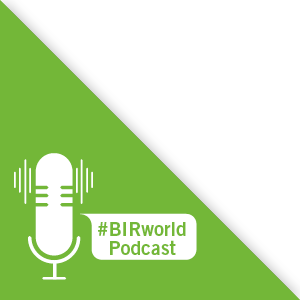While the EU part of Eastern Europe is slowing down for the holiday season, business in the post-Soviet countries entered the busiest time of the year after the long May holidays - probably the only time when we are not challenged by massive snow melts, heavy rains or -30 degC winter temperatures.
Ukrainian market participants have been quieter than usual because of not knowing what the new government’s scrap and secondary metals policy will be following the recent parliamentary election.
At the time of writing, the unemployment rate champion is the Czech Republic on just 2.2%, with Hungary on 3.4% and Poland on 3.8% also healthier than the European average of 6.3%.
At the end of the second quarter, the GDP growth forecast for Russia was adjusted from 1.6% to 1.2%. Despite political stability, Russia is being caught in the crossfire of the trade war between China and the USA, and also the recent talks over the Nord Stream 2 project. Exporters’ lives have not been made any easier by the ruble strengthening 5% against the US dollar in the second quarter.
Owing to the minimum 10% tariff on scrap exports, the secondary copper units traditionally exported from Russia are ingots and semi-finished products. Exporters shipping to China and European smelters are facing price reductions and volume cuts owing to lower levels of business activity in the summer; market participants are also reporting complications with opening Letters of Credit for Russian-origin metal. Import is restricted owing to the 20% VAT and strict non-tariff regulations.
The aluminium market in Russia is tight, as elsewhere. Production and sales of new cars declined 4.5% year on year in the second quarter, and there has been no sign of an improvement so far in 2019. As a result of the high export tariffs for scrap, exports of aluminium units from Russia are mainly AK5M2 and higher secondary grades (DIN226 and ADC 12). Owing to lower prices and demand for foundry alloys from the European and Asian markets, producers are tending to shift towards making more RSI instead - AK5M2. But given the current market conditions in Japan and South East Asia with plenty of Zorba available, the 10,000 tons of Russian RSI exported monthly is struggling to find a proper home.
Russia knows well how to consume the scrap and waste generated in the domestic market. Autonomy of the economy was one of the key points with the USSR. Now being part of the World Trade Organization (WTO), it is slowly learning how to use the benefits of the global metal trade, meaning that Belarus and Kazakhstan follow too as part of the Customs Union. Every September, according to WTO obligations, Russia releases a batch of tariff cuts on a number of goods including metal units; at the time of writing, it is still not known what exactly will be announced on this occasion. However, there is a draft bill being discussed that would impose a procedure to complicate exports of ferrous and non-ferrous scrap as a result of a solid internal lobby.

Natallia Zholud
TRM Group (BLR), Board Member of the BIR Non-Ferrous Metals Division
Country
 Eastern Europe
Eastern Europe
